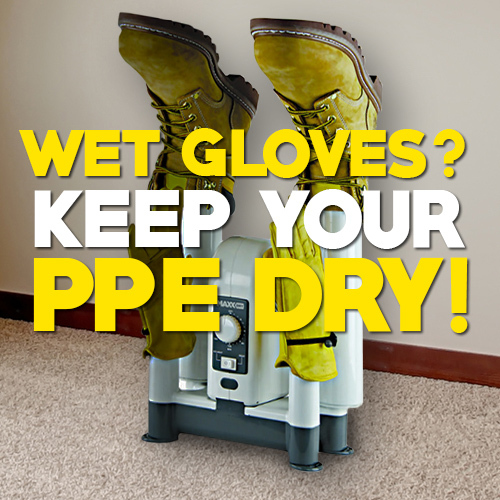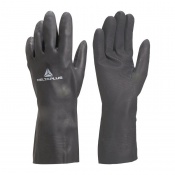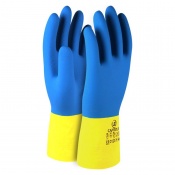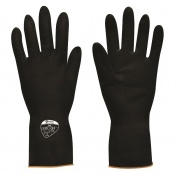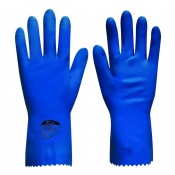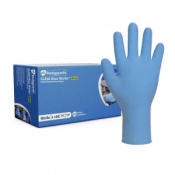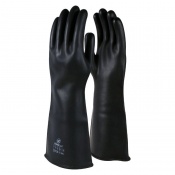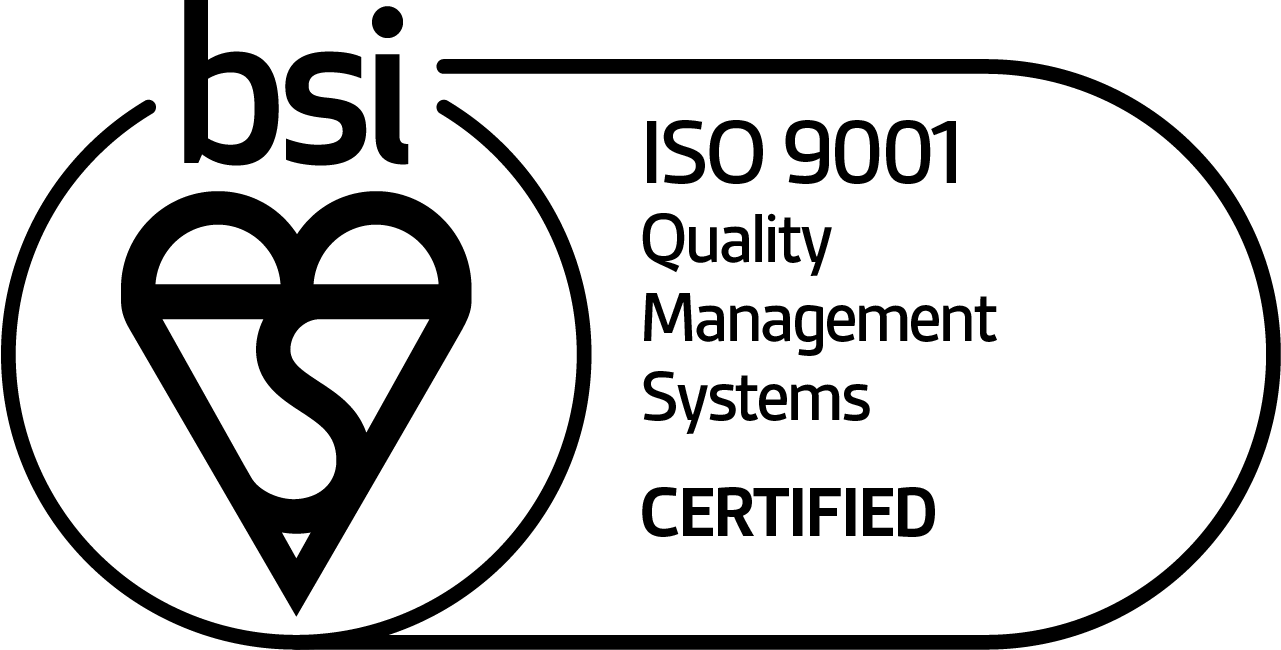EN 374:2016 Explained
14 December 2022
The standard that governs how chemical protection gloves are manufactured, tested and scaled has recently been changed. EN ISO 374:2016 is the updated version of the European safety regulation that determines which chemicals, solvents and microorganisms a glove is resistant to.
Because chemicals can be incredibly dangerous and even life-threatening, it's vital you understand exactly what's involved with EN 374. To help, we've put together this simple guide to clarify some of the most common questions and queries we get, and to provide some recommendations for protection against common workplace chemicals.
What's Included In Our Guide?
If you know what you're looking for, you can jump down the page using the quick links below. Alternatively, take a look at our expert product recommendations and information centre below.
EXPERT PRODUCT RECOMMENDATIONS
Information Centre
What is EN 374?
EN 374 is the European standard used to classify gloves according to the protection that they provide against chemicals and micro-organisms. In order for gloves to be classified under EN 374, they have to undergo various permeation tests.
Once tested, gloves are provided with a rating for their resistance to permeation by specific chemicals and micro-organisms to promote consumer safety. Gloves that have undergone this testing will be marked with the beaker symbol below:

The Best Acetone Resistant Gloves
- Pair of incredibly affordable chemical resistance gloves
- Essential wear for chemical handling and cleaning applications
- Neoprene safety gloves with cotton flock lining
- Extra long extended cuff with an overall length of 30cm
 | | Available |
|
|
- Price is per pair of gauntlet gloves
- Chlorinated natural rubber latex gauntlets
- High resistance to water-based chemicals
- Excellent resistance to abrasion and good tear resistance
 | | In stock now |
|
|
- Price is per pair
- Double-dipped for superior durability
- Slip-resistant grip pattern for easier handling
- Cotton flock lining for improved comfort
 | | In stock now |
|
|
- Pair of highly resistant chemical safety gloves
- Unique range of resistance makes them ideal for manufacturing
- Excellent resistance to Ketones, including MEK, Acetone and aromatics
- Anatomical shape enhances comfort, flexibility and precision
 | | In stock now |
|
The Best Ammonium Hydroxide Gloves
- Price is per pair of chemically resistant gauntlet gloves
- Ideal for heavy-duty chemical exposures like agricultural work
- Unrivalled affordability for the protection provided
- Heavyweight glove designed to withstand rubbing and scuffing
 | | In stock now |
|
|
- Price is per pair of gloves
- Ideal for household applications like washing dishes
- Latex-free to help prevent allergic reactions
- Protects against infiltration of water to keep hands dry
 | | In stock now |
|
|
- Pair of chemically-resistant food-safe washing up gloves
- Ideal for washing up, chemical handling and food manufacturing
- Protects against variety of chemicals including acids and alcohol
- Slip resistant pattern on palm and fingers enhances grip
 | | In stock now |
|
|
- Price is per pair of chemically resistant cleaning gloves
- Ideal for janitorial, cleaning and chemical exposure applications
- Medium weight rubber gloves with soft flock lining
- Slip resistant pattern on palm for enhanced grip
 | | In stock now |
|
The Best Formaldehyde Gloves
- Pair of medium-weight premium quality rubber gloves
- Ideal for industrial cleaning/washing and chemical handling
- Slip resistant pattern on palm enhances grip and accuracy
- Available in five different colours and five different sizes
 | | In stock now |
|
|
- Pair of extended wrist cuff chemically resistant safety gloves
- Protection against strong detergents, oils and common chemicals
- Ideal for laboratory, chemical handling and foodstuff applications
- Stippled palm coating pattern enhances dexterity and accuracy
 | | In stock now |
|
|
- Medical grade disposable gloves for virus protection
- Designed for medical, food and care industries
- Certified to EN 455 and virus certified to EN 374
- Price is per pack of 100 disposable gloves
 | | In stock now |
|
|
- Price is per pair of gloves
- Ideal for household applications like washing dishes
- Latex-free to help prevent allergic reactions
- Protects against infiltration of water to keep hands dry
 | | In stock now |
|
The Best Hydrogen Peroxide Gloves
- Pair of arm length PVC chemical resistance gauntlets
- Ideal for chemical handling, laboratories and drainage
- Protection against a range of acids, alkalis and solvents
- Incredible level of unrivalled full-length arm sleeve protection
 | | In stock now |
|
|
- Pair of chemically resistant work safety gloves
- Ideal for chemical handling and cleaning applications
- Slip resistant finish on palm and fingers enhances grip strength
- Good protections against abrasion and tears under EN 388
 | | In stock now |
|
|
- Pair of extended wrist cuff chemically resistant safety gloves
- Protection against strong detergents, oils and common chemicals
- Ideal for laboratory, chemical handling and foodstuff applications
- Stippled palm coating pattern enhances dexterity and accuracy
 | | In stock now |
|
|
- Price is per pair of gloves
- Good abrasion resistance
- High resistance to water-based chemicals
- Excellent grip in wet and dry conditions
 | | In stock now |
|
The Best Methanol Gloves
- Price is per pair
- Extra thick for durability, resistance and waterproof capabilities
- Anatomically shaped to ensure comfort during prolonged use
- Rolled cuff for drip protection and improved strength
 | | In stock now |
|
|
- Price is per pair of gloves
- Ideal for household applications like washing dishes
- Latex-free to help prevent allergic reactions
- Protects against infiltration of water to keep hands dry
 | | In stock now |
|
|
- Price is per pair of gauntlet gloves
- Chlorinated natural rubber latex gauntlets
- High resistance to water-based chemicals
- Excellent resistance to abrasion and good tear resistance
 | | In stock now |
|
|
- Pair of chemically resistant 100°C contact-heat safe work gloves
- Good protection against range of chemicals and cleaning agents
- Incredibly versatile protection for use in food environments and labs
- Liquid-proof and highly dexterous latex coated palm lining
 | | In stock now |
|
The Best Sodium Hydroxide Gloves
- Super strong disposable gloves for mechanical, chemical and automotive use
- Offer three times the chemical resistance of latex and vinyl
- Made to grip and protect with high sensitivity and dexterity
- Price is per box of 100 gloves
 | | In stock now |
|
|
- Price is per pair
- Double-dipped for superior durability
- Slip-resistant grip pattern for easier handling
- Cotton flock lining for improved comfort
 | | In stock now |
|
|
- Medical grade disposable gloves for virus protection
- Designed for medical, food and care industries
- Certified to EN 455 and virus certified to EN 374
- Price is per pack of 100 disposable gloves
 | | In stock now |
|
The Best Sulphuric Acid Gloves
- Price is per pair of gloves
- Ideal for household applications like washing dishes
- Latex-free to help prevent allergic reactions
- Protects against infiltration of water to keep hands dry
 | | In stock now |
|
|
- Pair of chemically resistant work safety gloves
- Ideal for chemical handling and cleaning applications
- Slip resistant finish on palm and fingers enhances grip strength
- Good protections against abrasion and tears under EN 388
 | | In stock now |
|
|
- Pair of chemical, mechanical and heat resistant safety gloves
- Ideal for food preparation, mechanics and chemical handling
- Full range of EN 388 protection against cut, abrasion puncture and tear
- Repellent against fats, oils and grease
 | | In stock now |
|
|
- Pair of chemical-resistant nitrile work gloves
- Suitable for petrochemical work or food preparation
- Waterproof for use in wet environments
- EN 374 rated for chemical and microorganism resistance
 | | In stock now |
|
Is EN 374:2003 Different to EN 374:2016?
So EN 374:2003 is on its way out and EN 374:2016 is appearing on more and more conformity statements, but what's actually changed?
Basically, EN ISO 374:2016 requires permeation tests to be carried out for more chemicals than EN 374:2003. The newer of the two standards adds an extra classification level according to the class of chemicals that the gloves protect against. This is specified as protection against virus, bacteria and/or fungi.
Chemical Resistance Rating
Under EN ISO 374:2016, gloves are tested for their resistance to 18 different chemicals, as opposed to the 12 chemicals tested under EN 374:2003. As a result, the new permeation table includes six new categories. Below is the complete list of chemicals that the gloves are now tested against:
| Code | Chemical | Classification |
| A | Methanol | Primary alcohol |
| B | Acetone | Ketone |
| C | Acetonitrile | Nitrile compound |
| D | Dichloromethane | Chlorinated hydrocarbon |
| E | Carbon disulphide | Sulphur containing organic compound |
| F | Toluene | Aromatic hydrocarbon |
| G | Diethylamine | Amine |
| H | Tetrahydrofuran | Heterocyclic and ether compound |
| I | Ethyl acetate | Ester |
| J | n-Heptane | Saturated hydrocarbon |
| K | Sodium hydroxide 40% | Inorganic base |
| L | Sulphuric acid 96% | Inorganic mineral acid, oxidising |
| M | Nitric acid 65% | Inorganic mineral acid, oxidising |
| N | Acetic acid 99% | Organic acid |
| O | Ammonium hydroxide 25% | Organic base |
| P | Hydrogen peroxide 30% | Peroxide |
| S | Hydrofluoric acid 40% | Inorganic mineral acid |
| T | Formaldehyde 37% | Aldehyde |
New Classification Information
As well as adding more comprehensive chemical testing, EN 374:2016 also includes a new category, where gloves are rated either Type A, Type B, or Type C – depending on the number of chemicals that they provide protection against.
Most chemical-resistant gloves will be classified as Type A. These are gloves that protect against permeation by at least six of the above chemicals for a period of 30 minutes or more.
How To Read EN 374
EN ISO 374:2016 makes use of the same beaker symbol as EN 374:2003, with the letters of the chemicals it has passed resistance tests for shown underneath. However, the classification of Type A, Type B or Type C is added to the top of the symbol for gloves that have been tested to EN 374:2016. Here is what the new symbol looks like:
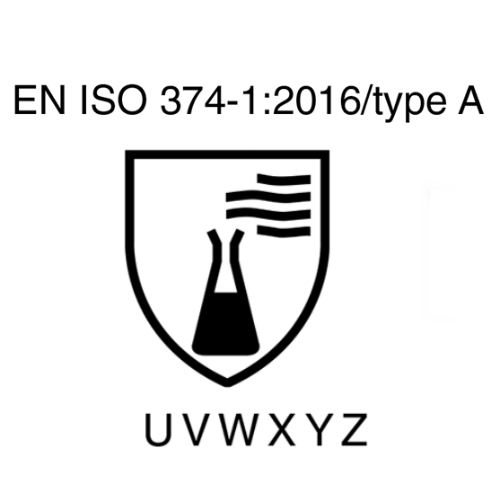
What's Involved In the Tests?
Degradation Testing
A new degradation test has been introduced under EN 374:2016, where any changes to the physical properties of a glove after exposure to a particular chemical are recorded. Changes noted include swelling, cracking, brittleness or shrinkage.
In Layman's Terms
The degradation test changed slightly in 2016 so you're not just getting a list of chemicals anymore. You are now able to see a description of exactly how a glove behaved when exposed to a particular chemical.
Permeation Testing
Under EN ISO 374:2016, three specimens from the palm are tested for chemical permeation and gloves that are 400mm or longer (or have a cuff intended to protect the wearer) will require additional testing to determine the permeation level of the cuff in comparison to the palm. If the palm and cuff achieve different results, then the lower result will be used to classify the glove.
In Layman's Terms
Chemical testing involves three separate pieces of glove fabric being exposed to the chemical. The resistance is then recorded and featured in the protection classification table that you will find on every single EN 374 glove on our site.
If a glove features an extended cuff for splash resistance, the cuff will be tested independently from the fabric mentioned above. If they show different results, the lower result will be used to classify the glove.
Protection Against Micro-Organisms Testing
EN ISO 374-5:2016 specifically classifies gloves according to whether they provide protection against bacteria, fungi and/or viruses for greater safety. The specific micro-organism that the glove provides protection against (if any) will be listed below the biohazard symbol shown below.

Other Standards Explained
If you're looking for similar guides to other EN standards, we've got you covered. Click any of the links below for more information:
Other Useful Pages
If you haven't find what you're after, we have plenty more helpful guides on similar topics. Take a look at the pages below for more information:
The Last Word On EN 374
EN 374 is an important standard for a whole host of different professionals and workers. We hope we've broken this standard down in a way that is digestable, and that some of our recommendations have helped you get the gloves you need.
If you're still looking for more, click the link below to view our entire range.
Have any questions, or anything to add? Tell us in the comments below, or find us on Facebook and Twitter!



